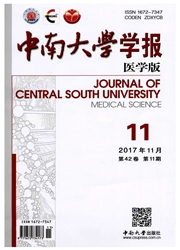

 中文摘要:
中文摘要:
富亮氨酸重复(LRR)超家族成员已达4000多种,它们在进化上保守、功能多样。许多研究表明,LRR蛋白在神经系统的发育厦正常功能的维持中扮演重要角色,与脑瘤的发生发展亦存在一定的联系。LGI1,LR-RC4主要分布于正常脑组织,与脑胶质瘤的恶性程度密切相关,随着胶质瘤恶性程度的增高,其表达逐渐下调甚至缺失。Slitrk,Slit度GAC1等亦参与了脑瘤的发生发展。
 英文摘要:
英文摘要:
There are over 4 000 proteins with leucine-rich repeat domain in various organisms from virus to eukaryote, which construct a protein superfamily with evolutional conservatism and functional diversity. LRR proteins play an important role in the development of nervous system, the maintenance of normal function, and the development of brain tumor as well. It was detected that LGII was predominantly expressed in normal neural tissues, especially in brain tissues, and down-regulated gradually with increasing grade of for its activity can malignancy in gliomas. Re-expression of the LGI1 gene in glioma cells that were null greatly reduce their malignant potential. LRRC4 expression was limited to normal brain, however lower or absent expression in majority of brain tumors, especially in gliomas. LRRC4 has the potential to suppress tumorigenesis and cell proliferation of U251MG cells. Other LRR proteins also participate the development of brain tumors, such as Slitrk, Slit and GAC1. There is a close correlation between LRR proteins and brain tumors.
 同期刊论文项目
同期刊论文项目
 同项目期刊论文
同项目期刊论文
 期刊信息
期刊信息
